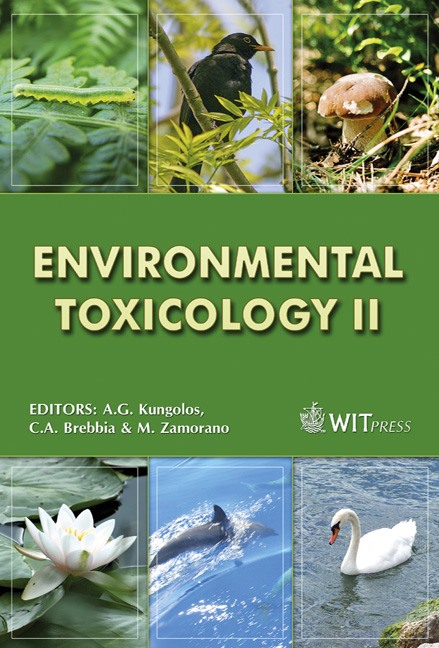Determining The Suitability Of Ceriodaphnia Rigaudii As A Toxicity Test Species
Price
Free (open access)
Transaction
Volume
110
Pages
7
Page Range
219 - 225
Published
2008
Size
275 kb
Paper DOI
10.2495/ETOX080231
Copyright
WIT Press
Author(s)
A. Mohammed
Abstract
The selection criteria for toxicity test species though well documented, does not provide a clear approach for establishing the suitability of a species for toxicity testing. This study looks at an approach used for establishing C. rigaudii as a suitable freshwater toxicity test species for regulatory testing in Trinidad and Tobago. A comparison was made between the life cycle, toxicological responses and sensitivity of C. rigaudii and D. magna. The results showed that C. rigaudii (0.45mm) was significantly smaller in size, had a shorter life cycle, matured faster and was more sensitive to toxicants than the temperate cladoceran species, D. magna. This study was useful in defining a stepwise approach to help establish C. rigaudii as an indigenous tropical toxicity test species in Trinidad. Keywords: ceriodaphnia rigaudii, cladoceran, Trinidad, interspecies correlation, species selection, toxicity test. 1 Introduction Toxicity tests generally follow standard protocols developed for both aquatic and terrestrial organisms. These tests are often standardized with respect to species selection, pre-test maintenance/care of organisms, age of test organisms, food, duration, ambient light conditions, temperature, and end-points. Standardised test protocols [1–4], are commonly used by various environmental protection agencies (U.S. Environmental Protection Agency, Environment Canada and Environmental Management Authority in Trinidad), forming an integral part of their environmental monitoring programs. The choice of test organism has a major influence on the relevance, success, and interpretation of toxicity tests. No one organism may be suited for all
Keywords
ceriodaphnia rigaudii, cladoceran, Trinidad, interspecies correlation, species selection, toxicity test.





